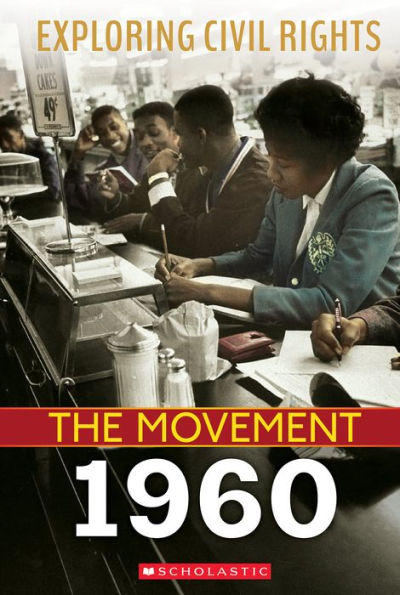The year 1960 was a turning point in the civil rights movement as young Black men and women became peaceful warriors for change. In February, four Black college students, known as the Greensboro Four, were refused service at a lunch counter in North Carolina. Their sit-in inspired similar protests across the country, demonstrating the ideals of civil disobedience and nonviolent resistance. In November, as the year drew to a close, the nation’s eyes were on Ruby Bridges, a Black first grader who bravely integrated the William Frantz Elementary School in New Orleans. Desegregation would create a crisis of law and order throughout the South as the decade continued.
ABOUT THE SERIES:
The years from 1955 to 1965 are at the heart of the civil rights movement—from the Montgomery bus boycott to the Voting Rights Act. The contributions of key activists, including Rosa Parks, Dr. Martin Luther King Jr., John Lewis, Barbara Nash, and Malcolm X, are part of the narrative. Demonstrations of passive resistance and legal challenges were often met with bloodshed and violence against Black Americans fighting to end segregation and discrimination. Yet the courage of those yearning for equal opportunities under the law ultimately produced legislation affirming that every American should have the same constitutional rights, regardless of color, race, or gender.
With stunning photographs throughout and rich back matter, each book focuses on a specific year and chronologically follows the detailed events that occurred and the changes that took place.
The year 1960 was a turning point in the civil rights movement as young Black men and women became peaceful warriors for change. In February, four Black college students, known as the Greensboro Four, were refused service at a lunch counter in North Carolina. Their sit-in inspired similar protests across the country, demonstrating the ideals of civil disobedience and nonviolent resistance. In November, as the year drew to a close, the nation’s eyes were on Ruby Bridges, a Black first grader who bravely integrated the William Frantz Elementary School in New Orleans. Desegregation would create a crisis of law and order throughout the South as the decade continued.
ABOUT THE SERIES:
The years from 1955 to 1965 are at the heart of the civil rights movement—from the Montgomery bus boycott to the Voting Rights Act. The contributions of key activists, including Rosa Parks, Dr. Martin Luther King Jr., John Lewis, Barbara Nash, and Malcolm X, are part of the narrative. Demonstrations of passive resistance and legal challenges were often met with bloodshed and violence against Black Americans fighting to end segregation and discrimination. Yet the courage of those yearning for equal opportunities under the law ultimately produced legislation affirming that every American should have the same constitutional rights, regardless of color, race, or gender.
With stunning photographs throughout and rich back matter, each book focuses on a specific year and chronologically follows the detailed events that occurred and the changes that took place.

1960 (Exploring Civil Rights: The Movement)
96
1960 (Exploring Civil Rights: The Movement)
96Hardcover(Library Edition)

Product Details
| ISBN-13: | 9781338769777 |
|---|---|
| Publisher: | Scholastic, Inc. |
| Publication date: | 01/04/2022 |
| Series: | Exploring Civil Rights Series |
| Edition description: | Library Edition |
| Pages: | 96 |
| Product dimensions: | 6.00(w) x 9.00(h) x (d) |
| Age Range: | 10 - 13 Years |
